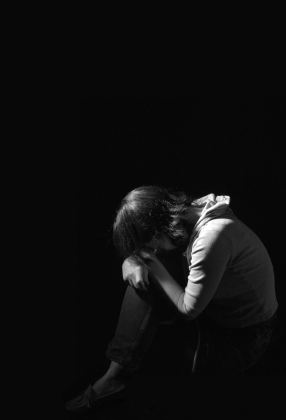|

Depressao pseudoresistente significa nao ter recebido o tratamento adequado para a depressao maior.
Cinco caracteristicas do tratamento inadequado da depressao :
- O mais comum é a administracao de antidepressivos em doses inadequadas (insuficientes). Com oa tricíclicos observamos relacao clara entre nivel plasmatico da medicacao e resposta terapeutica.
- Duracao do tratamento com antidepressivos. Sabe-se que os pacientes idosos requerem exposicao mais prolongada aos antidepressivos. No mínimo exige-se dose adequada durante 4 semanas.
- Aderencia ao tratamento. A melhora é improvavel se o paciente nao adere ao tratamento. Os efeitos colaterais sao a causa mais comum.
- É importante avaliar a evolucao do tratamento . Quanto mais sintomas residuais apos o tratamento com medicamentos maior a chance de recidivas. O objetivo é alcancar remissao.
- Diagnostico incorreto . Se o antidepressivo nao for eficaz deve-se tambem pensar nessa hipotese. Muitas doencas clinicas podem se apresentar como depressao.
Entretanto deve se ter em mente que 20 a 40% dos pacientes nao apresentam resposta significativa ao tratamento com antidepressivos.
5 Features of Pseudoresistant Depression
Pseudoresistant depression means not having received adequate treatment for major depression.
5 Features of inadequate treatment for Depression are:
- The most common source of lack of response in depression is the administration of inadequate dosage . With some antidepressants, the tricyclic antidepressants (TCAs), there is evidence for a relationship between plasma levels and therapeutic outcome
- Treatment duration with antidepressants. There is some evidence that elderly patients may require longer exposure to medication. At least adequate dosage during 4 weeks is the absolute minimum.
- Adherence with treatment. Improvement is unlikely if patients do not adhere to treatment. Side-effects are a common cause.
- It is important to evaluate treatment outcome . The greater the level of depressive symptomatology following antidepressant treatment the higher the probability of relapse. The goal in treating the acute episode is to achieve remission
- Wrong diagnosis. If the antidepressant doesn't work this option should be considered. Several somatic illnesses and medication can present with depressive symptoms.
Nevertheless it is estimated that 20-40% of patients with a major depressive episode do not show substantial clinical improvement to their first antidepressant treatment.
Staging methods to assess levels of treatment resistance in depression are being developed:
- The Antidepressant Treatment History form. A clinician rated instrument. This form is empirically validated via prospective treatment outcome reports. This form is mostly used with electroconvulsive therapy (ECT) outcome. There is debate about the influence of treatment resistance and efficacy of ECT. Some studies show a negative influence on ECT outcome of medication resistance other studies can't find such an influence.
- Harvard Antidepressant Treatment History. Clinician rated instrument.
- Massachusetts General Hospital Treatment Response Questionnaire. Patient rated instrument. Advantage of this instrument is the absence of clinicians' biases, particularly when treatment resistance is required for inclusion in a study.
|

